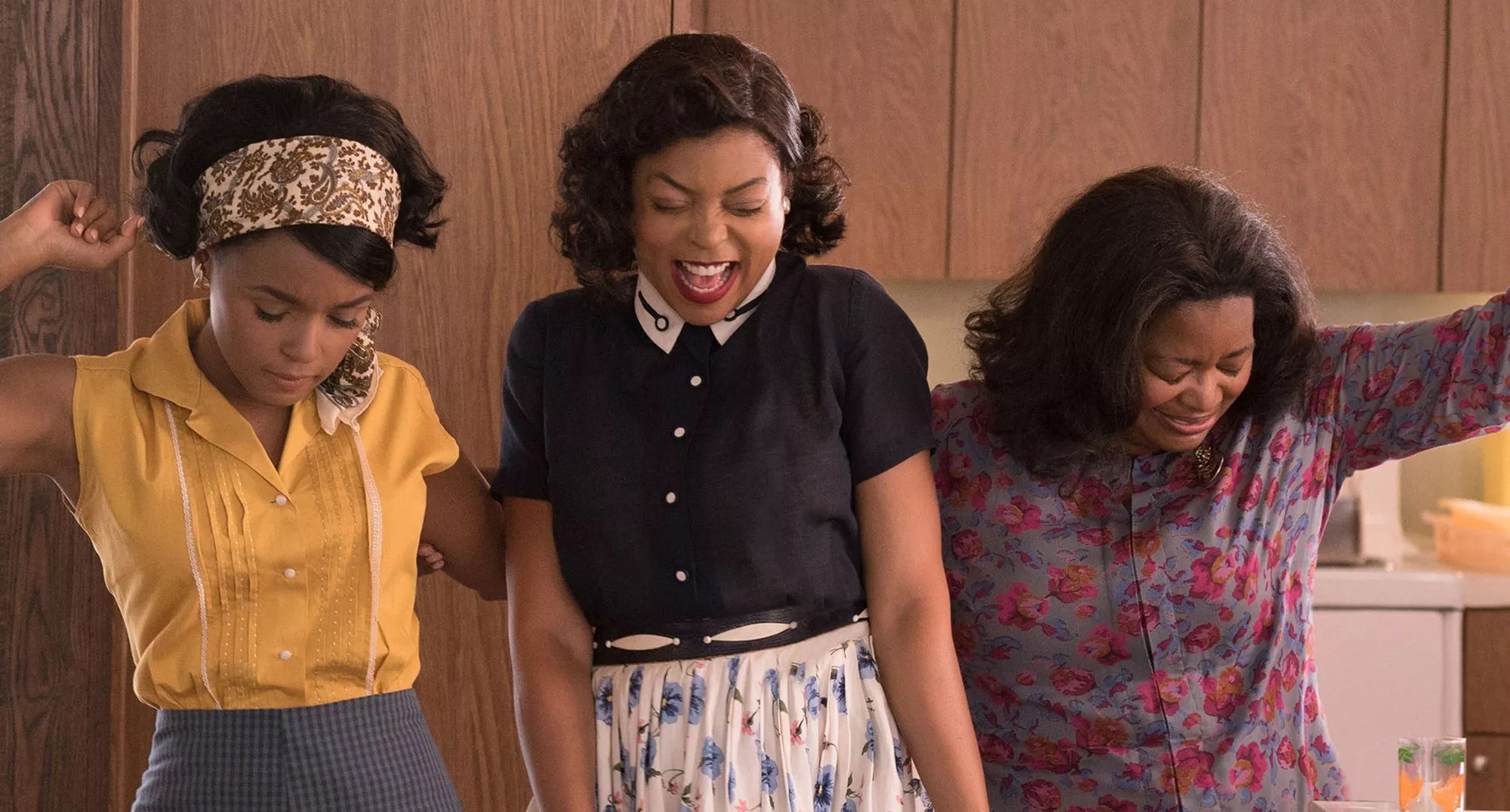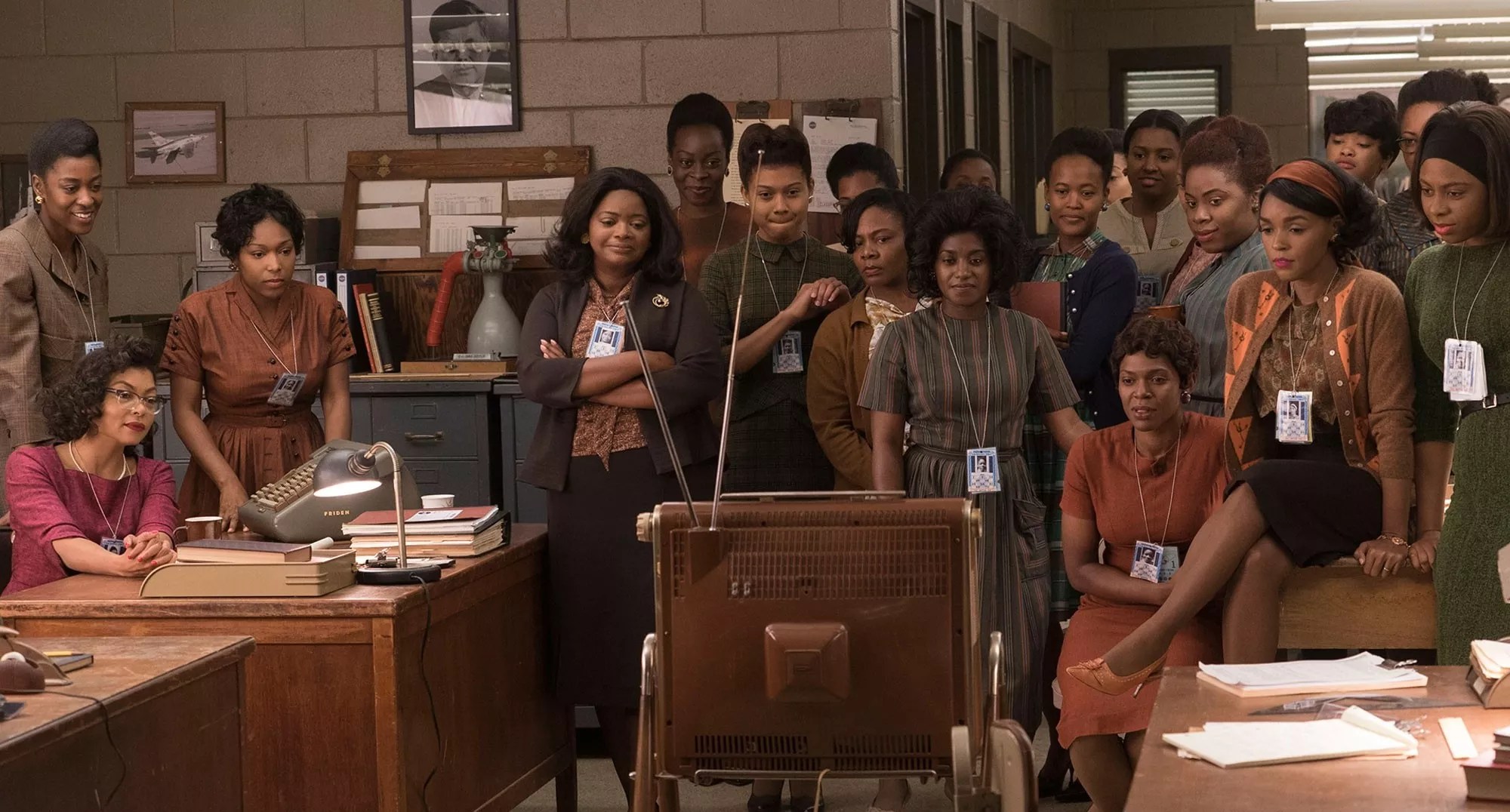
Courtesy of 20th Century Fox

Audio By Carbonatix
Accepting the Welt Literature Prize in Berlin on November 10 of this year, the novelist Zadie Smith said, “Time travel is a discretionary art: a pleasure trip for some and a horror story for others.” She was speaking, of course, of the conviction among so many white people that there’s a better world ahead if we can just return to the past. She notes that “for a black woman the expanse of livable history is so much shorter” than it is for the Make America Great Again crowd. “What would I have been and what would I have done – or more to the point, what would have been done to me – in 1360, in 1760, in 1860, in 1960?” (Smith’s speech is reprinted in the December 22 edition of The New York Review of Books.)
That thought echoes in a joyous declaration from Janelle Monáe just six minutes into the candied history pageant Hidden Figures. The film’s leads, a trio of African-American mathematicians employed at NASA to perform advanced calculations in the early days of the space program, have just turned around a shakedown traffic stop from a cracker cop. Impressed at the importance of their jobs, and by their politeness, he offers to escort them straight to their Langley office, sirens blaring. Monáe’s character floors it, tailgating him, drawling to her passengers, “Three Negro women are chasing a white police officer down a highway in Hampton, Virginia, in 1961. Ladies, that there is a God-ordained miracle!”
A red felt Bozo bulb isn’t as on-the-nose as that dialogue, but the impulse behind it rings true. How often, lately, as you’ve lived your life, have you wondered if the freedoms you’re exercising now will persist through to the 2020 election? Hidden Figures, directed by Theodore Melfi (St. Vincent), is a canny and necessary crowd-pleaser in which not one moment feels like life itself. But, together, in their superb Hollywood falseness, they accrete into a portrait of our best idea of our national character while still exposing bitter truths about who was allowed to be what back in that age of presumed “greatness.” It’s big and broad, subtle as Sunday School felt-board parables, each moment sweated over by the filmmakers to ensure it communicates clearly to 10-year-olds and hard-of-hearing grandparents. But few of those moments insult the intelligence of the rest of us – and I expect that anyone can find inspiration in the script’s (by Melfi and Allison Schroeder) attention to the small, concrete steps real people make to create change.
The women the film honors have had buildings at NASA and scholarships and a vital work of popular history, Margot Lee Shetterly’s Hidden Figures, all dedicated to them. So they’ll be just fine if the movie version glosses up their lives and applies all the craft and corn of big-studio moviemaking into telling the story of the unlikeliest of underdogs.
This year, make your gift count –
Invest in local news that matters.
Our work is funded by readers like you who make voluntary gifts because they value our work and want to see it continue. Make a contribution today to help us reach our $50,000 goal!

Courtesy of 20th Century Fox
The film is one of ascents. Each of the leads will escape the gravity of her present for a better future. Monáe’s Mary Jackson aspires to be the first official female engineer at NASA, which means she’ll have to take classes at the still-segregated University of Virginia – being the first means being first, over and over again. Octavia Spencer’s Dorothy Vaughan, who manages the “Colored Computers” office pool of black female mathematicians, wants to be given the rank of supervisor, as she already does the work – she also wants a shot at running that new IBM mainframe that she knows will soon make her team obsolete. And Taraji P. Henson’s brilliant, shy Katherine Johnson just wants the chance to set her mind onto the kind of problems she’s trained it for, the analytic geometry that, at NASA, remains the province of white dudes in white button-downs.
Scenes of Johnson among those higher-ups are the film’s strongest. She gets assigned to help out the team calculating orbits for manned space launches. Her challenge isn’t the math, which she can whiz through – it’s the aggressions, micro and macro, leveled at her by a roomful of white engineers who all conceive of themselves as good people. (NASA’s white people, in this telling represented by Kirsten Dunst and Jim Parsons, all think of segregation as just “the way things are,” a line that repeats.)
On her first day, she gets so caught up in the math that she notices too late that everyone in the room is watching her pour herself coffee from a pot not labeled “Colored Only.” She has to dash over a mile away anytime she needs to visit the ladies’ room – the facilities in her building are whites only. Henson brims with hurt, disappointment and willful purpose, a woman who’s as proud of her country’s space program as any of the white dudes are, and who knows she has a contribution to make.
Of the leads, she’s given the most room to build a character, with scenes of motherhood and an abbreviated romance with a smitten veteran (Moonlight‘s Mahershala Ali.) Monáe is all pert defiance, a symbol of determination but also practicality; Spencer plays the overworked optimist who anticipates change and educates herself to prepare for it. We’re treated to moving glimpses of this trio’s camaraderie, but they’re all together onscreen too briefly – might I suggest this as the cast of a 9 to 5 remake?
Kevin Costner has made a sideline in recent years, in Black or White and McFarland, USA, playing the ambassadorial role of the White Guy Who Discovers That American Minorities Are All Right. Here, the character has been crafted to let white viewers feel good about how they might have behaved back then. His Al Harrison is a practical old salt who just plum never thought much about the racial injustice that is the defining aspect of his America – but, hey, as soon as it comes to his attention (and is slowing down his team), he takes decisive action to right what wrongs he can. More crucially, he treats Johnson like a person and shows his team how to do the same.
Just as the heroism of astronauts stirs species-level pride, the courage and determination of these women whose worked lifted them sets soaring something in our common humanity, something we need now. Hidden Figures offers the welcome sight of black women explaining things to white men – and increasingly, as the space race heats up, those white men can’t find excuses not to listen. If popular narrative art is subtly instructive, if it helps establish the drift of the collective mind, the film is a cheerful intervention. It’s a lesson to white America in how to get over its sense that only it is equipped to be in charge – and Kevin Costner is here to serve as an example of how to help and get out of the way.